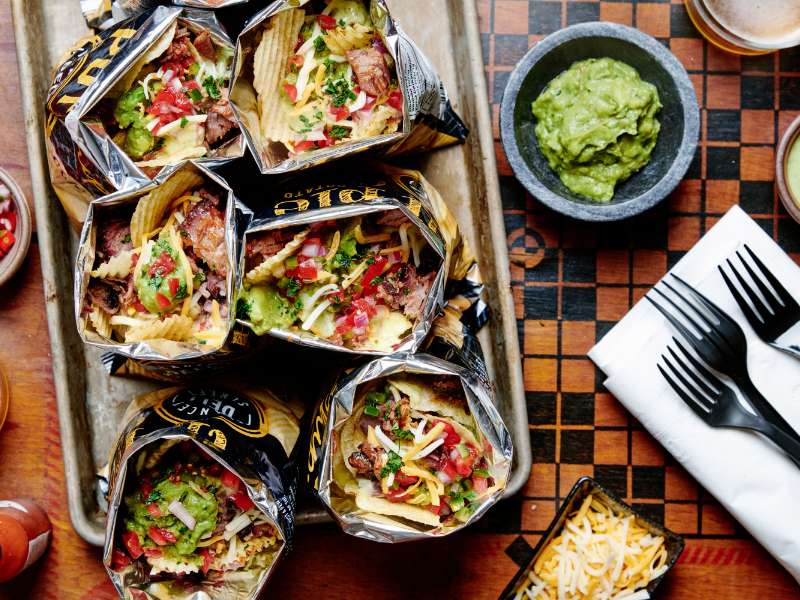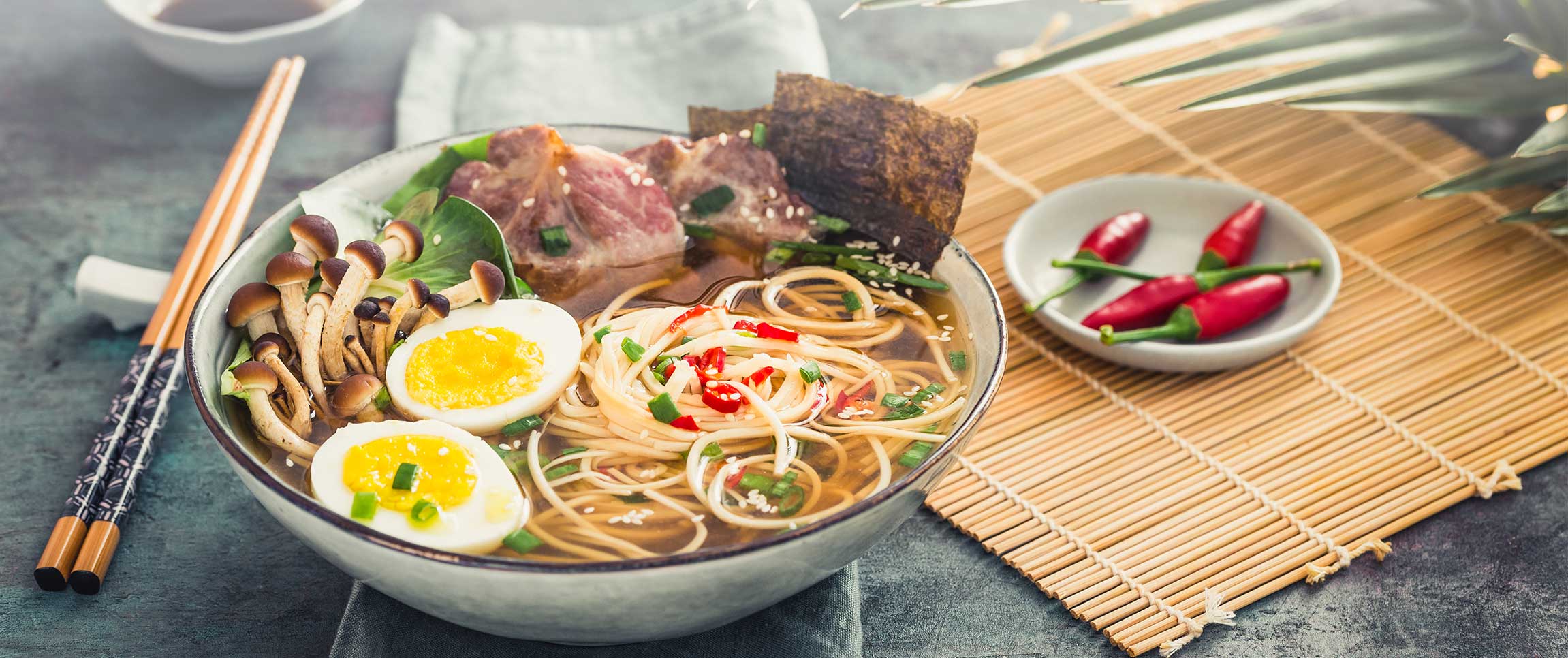It’s been more than a few years since ramen became the big thing and was popping up on the unlikeliest of menus. Ramen has shown to have staying power—while other food fads have come and gone, it has settled in to become a staple, year-round menu item.
This isn’t your cheap college staple ramen. It may seem simple, but a good ramen is a symphony that is simultaneously elegant and comfort food. With the right components, it’s not too difficult to make and can quickly come off your line even during the busiest shift.
The Pasta
Yes, you can make your own and there are many places that do make excellent ramen pasta from scratch. But if you only have one ramen dish on your menu, this might not be a practical use of your time or resources. One option is the familiar square ramen noodle blocks—they’re immediately recognizable by your diners and extremely quick to cook. For higher quality texture and taste, try ramen noodles packaged in bundles.
In a pinch? You can repurpose your spaghetti or bucatini noodles to use in your noodle bowl. Add a little baking soda to the boiling water (carefully so it doesn’t boil over), and your Italian pasta will take on the color, texture, and taste of ramen noodles. If you’re making the noodles from scratch, add the baking soda directly into the pasta dough to achieve a similar transformation.
For guests with special dietary needs, offering a gluten free noodle is always a good choice. Additionally, those on Keto or low carb diets will be happy if you offer a shirataki noodle as a substitute.
The Broth
It would be easy to think ramen is all about the noodles, but the broth is really the key to the dish. The best is created using pork bones, but most any good stock will serve the purpose. The next step is the seasoning—referred to as the tare. Traditionally, there are two main types of broth: shio (salt based) and shoyu (soy sauce based). You can also add different flavors like miso, to give it a creamy flavor, or chili paste, to amp up the heat. The extra flavors are often served as a paste ball, in the soup or on the side, and the diner mixes it in to meet their taste preference.
 The broth might also dictate if you are going for ramen or something more along the lines of pho. The most common difference between the two is their broth. In ramen the pork bones are cooked in hard boiling water, while pho is typically beef bones simmered slowly over a lower heat and then strained.
The broth might also dictate if you are going for ramen or something more along the lines of pho. The most common difference between the two is their broth. In ramen the pork bones are cooked in hard boiling water, while pho is typically beef bones simmered slowly over a lower heat and then strained.
For a vegetarian option, the ramen broth can be made using a vegetable or mushroom stock flavored with seaweed. Also, don’t forget that most soy sauces these days have gluten. Consider a tamari soy sauce to keep that gluten free symbol by the dish.
The Meat
If you’re going traditional, chashu pork is the way to go. Take a pork loin, preferably with fat, and slowly braise it in soy sauce, mirin, and brown sugar. When tender, wrap in plastic and chill. For service all you need to do is slice and allow to warm in the ramen broth.
Chashu, of course, isn’t the only option. Depending on your broth base, most any protein will work. Try slices of chicken or roasted duck with the skin on. Marinated seafood and shellfish mixed in or simply poached then placed on top are also good choices. For brunch you might want to add pork belly, braised and sliced or crisped to give a texture reminiscent of bacon. If you’re going for something more akin to pho, consider thin slices of rare roast beef or slow cooked tendon.
The meat can be the perfect opportunity for you to tie your ramen dish into the rest of your menu or to highlight locally sourced proteins.
The Extras
A little vegetable can go a long way in ramen. Sweet corn can help counter some of the bitter flavors in the broth while mung beans can add a little crunch. Mushrooms are a wonderful addition and can also be used if you’re going vegetarian or vegan.
To add a pop of color, slices of scallion or green onion or even fresh chopped cilantro can round out the dish—especially if you’re using pho as inspiration. If you do any pickling, from purple onion to carrots, ramen is a perfect place to highlight your creations.
To finish, a little drizzle of infused oil might be what your dish needs—both for taste and visuals. Black garlic oil is trendy right now and adds color contrast with a richly mellow smoky flavor. For a kick, some hot pepper oil would work while a bit of truffle oil will add a touch of elegance to your noodle dish.
The Egg
A bowl of ramen doesn’t seem complete without an egg. Traditionally, you’d see a soft-boiled egg with a custardy yolk that has been marinated in soy sauce and mirin. To achieve this, put in simmering water, just at the boil, for seven minutes then transfer to an ice bath. Allow to cool fully then peel and place in the marinade.
You can, like with the other components, get creative. Poached eggs have been popping up on ramen dishes, or you can even just place a single yolk in the middle of the dish before sending out. The creaminess of the yolk plays well with the general saltiness of the dish.
For something a little over the top, try a quail or even a duck egg. They are slightly different profiles but achieve the same result and are sure to pop on your menu.



